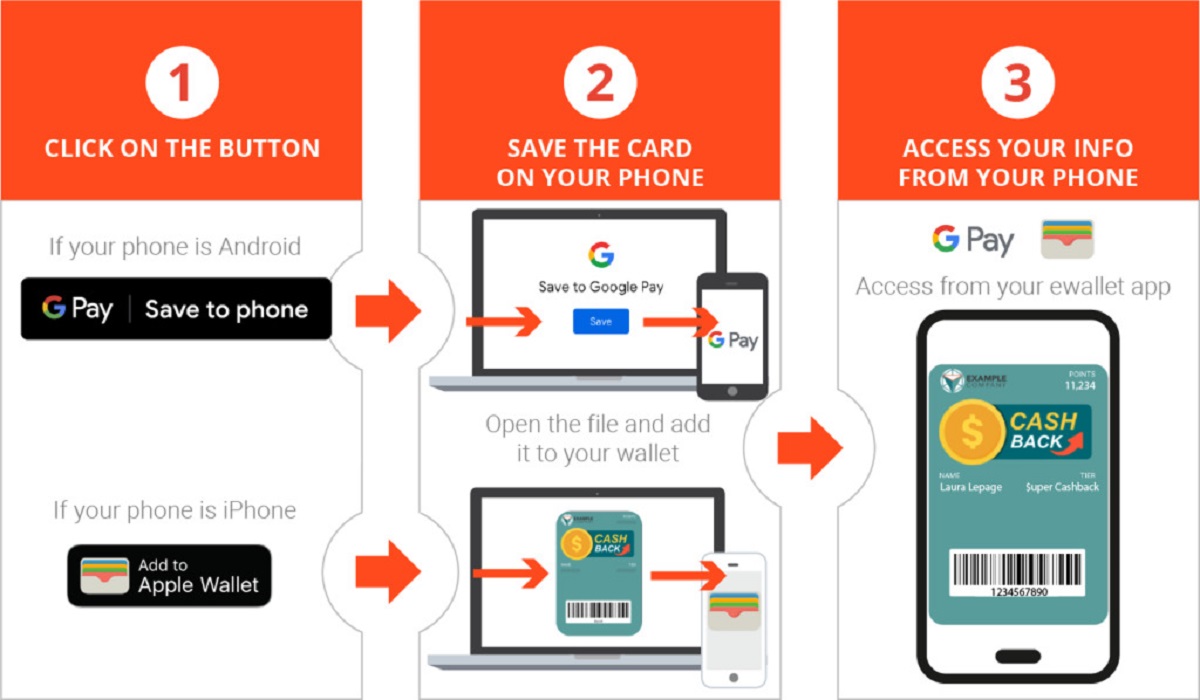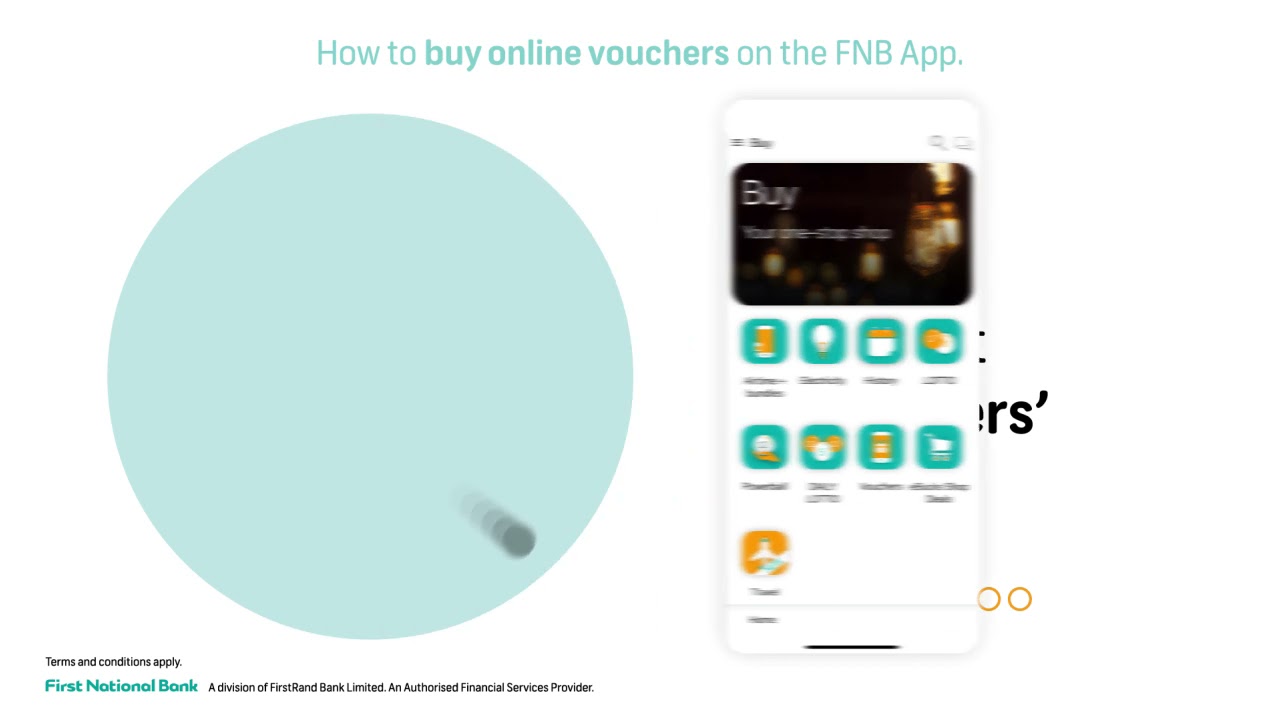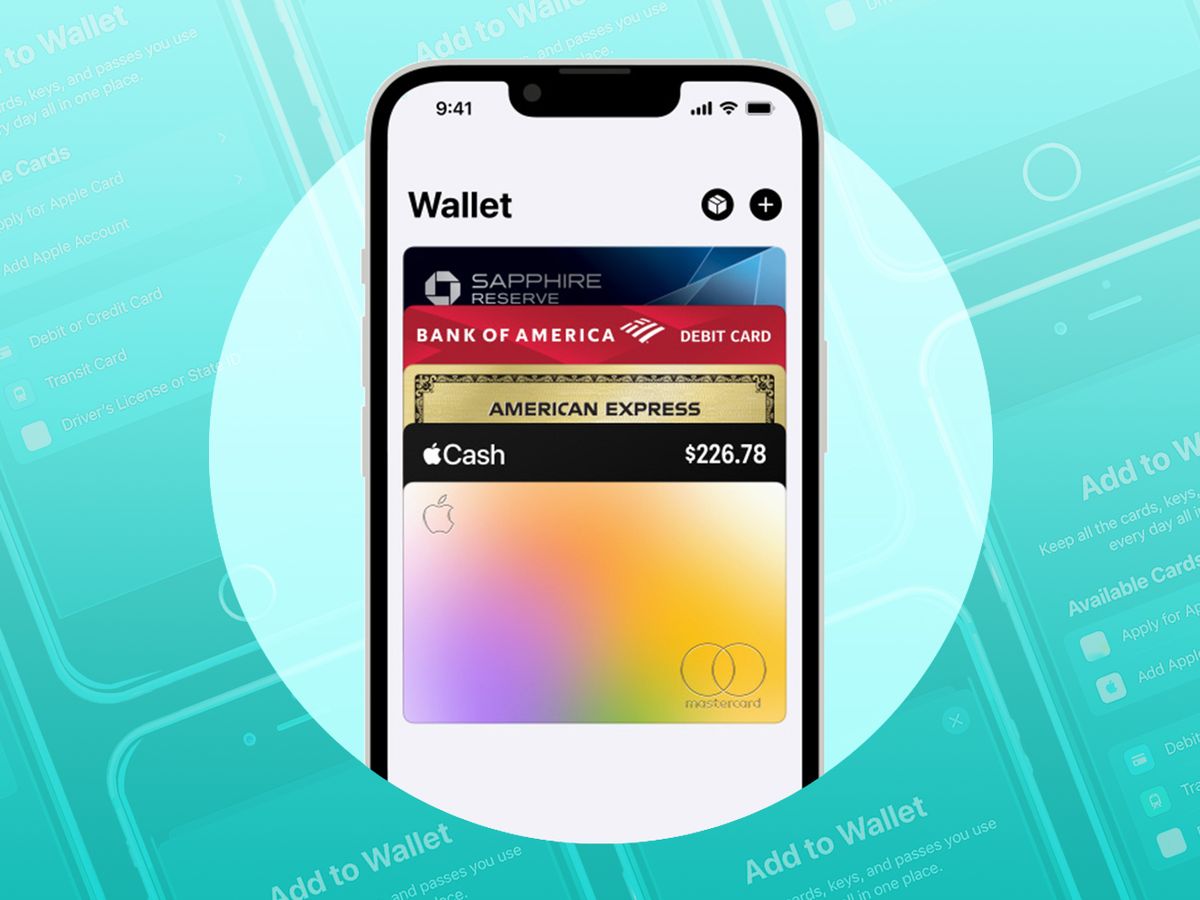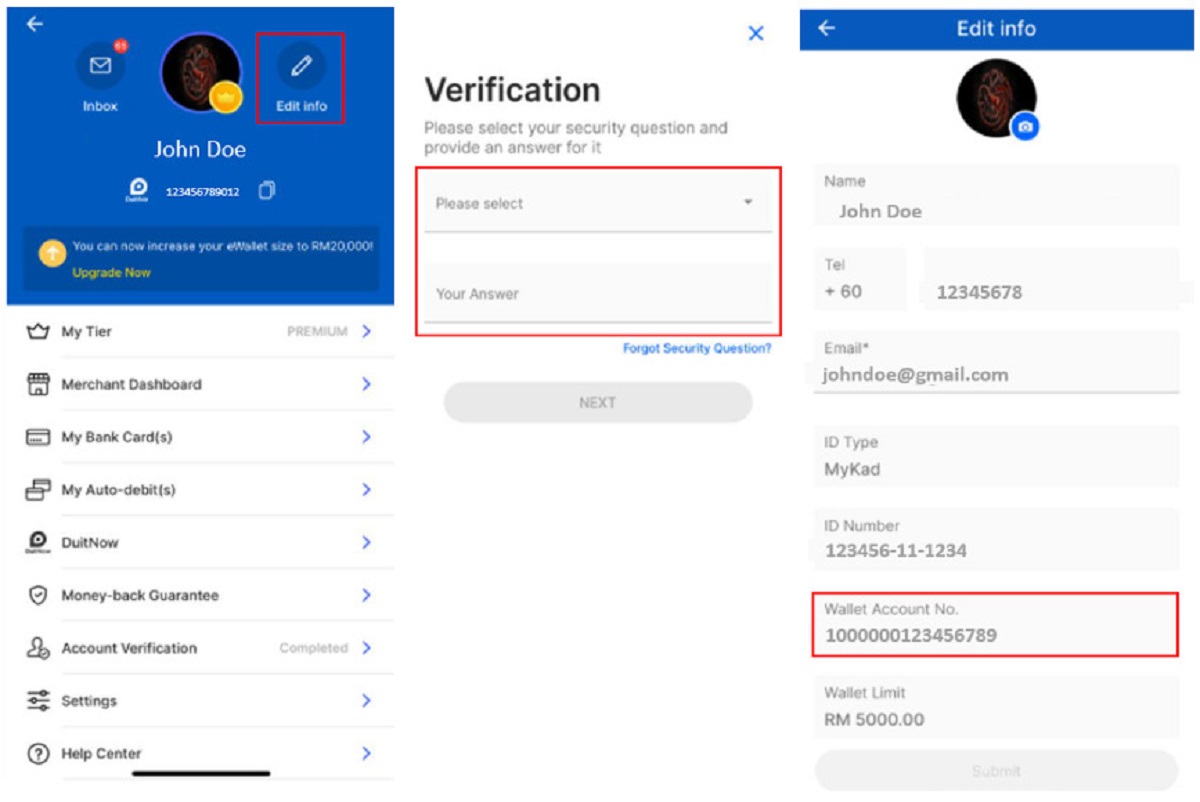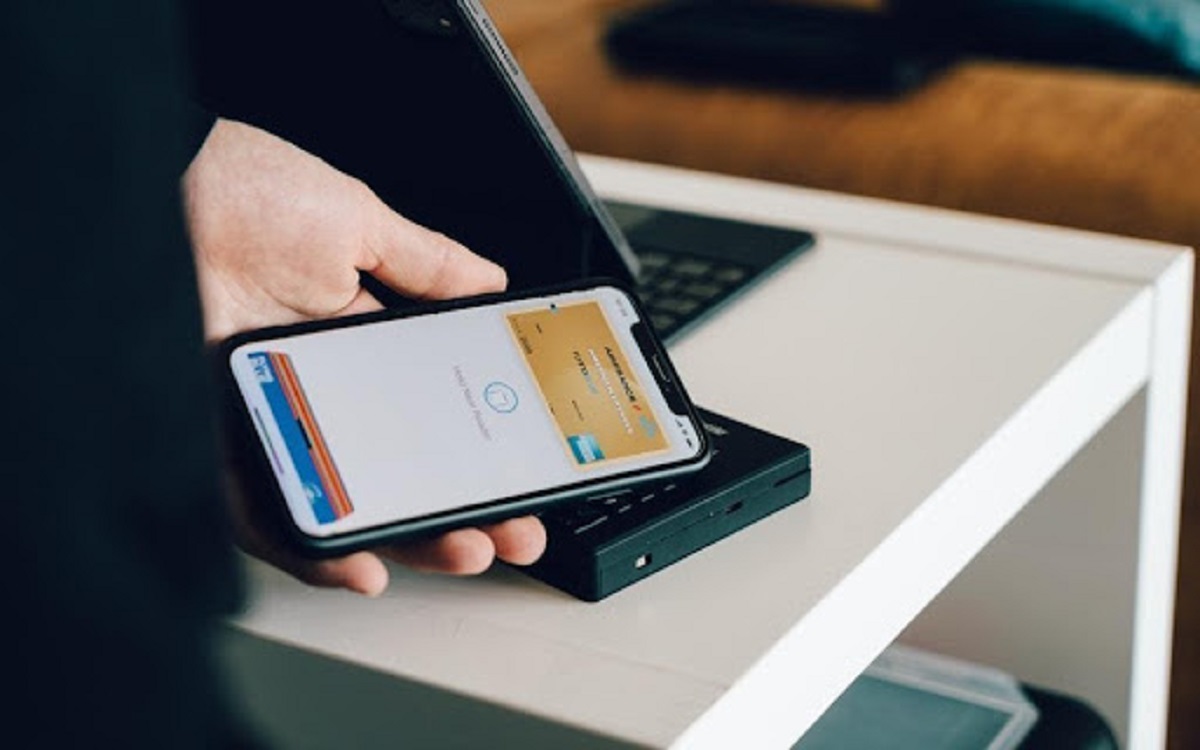Introduction
In today’s digital era, the use of electronic wallets, commonly known as e-wallets, has become increasingly popular. An e-wallet is a digital payment method that allows users to securely store and manage their money electronically. With the convenience of smartphones and the widespread adoption of online payment platforms, e-wallets have emerged as a convenient alternative to traditional cash and card transactions.
An e-wallet acts as a virtual wallet that enables users to make payments, transfer funds, and store their financial information securely. By linking their bank accounts or credit cards to the e-wallet app, users can easily pay for goods and services with just a few taps on their mobile devices.
One of the key benefits of using an e-wallet is the convenience it offers. With an e-wallet, users no longer need to carry physical cash or multiple cards. Everything is stored digitally on their smartphones, making payments quick and hassle-free.
Additionally, e-wallets provide a higher level of security compared to traditional payment methods. By using encryption and other security measures, e-wallets protect users’ financial information and reduce the risk of fraudulent activities.
Furthermore, e-wallets often come with additional features such as budgeting tools, loyalty programs, and cashback rewards. These added benefits enhance the overall user experience and make e-wallets a compelling choice for managing finances.
However, with the myriad of e-wallet options available in the market, it can be overwhelming to choose the right one. Each e-wallet has its own set of features, fees, and acceptance among merchants. Therefore, it is important to carefully evaluate and select an e-wallet that aligns with your specific needs and preferences.
In this article, we will guide you through the process of redeeming funds from your e-wallet. Whether you want to transfer the funds to your bank account, make purchases online, or redeem them in physical stores, we will explore the various options available to you. So, let’s get started with understanding how e-wallets work and the benefits they offer.
What is an E-wallet?
An e-wallet, also known as a digital wallet or mobile wallet, is a virtual wallet that allows users to securely store and manage their funds digitally. It is essentially a digital payment method that enables users to make transactions and payments using their smartphones, tablets, or other internet-connected devices.
Unlike physical wallets that hold cash and cards, e-wallets store digital representations of money and payment methods. Users can link their bank accounts, debit or credit cards, or even load money directly into their e-wallet accounts. This allows for quick and convenient transactions without the need to carry physical cash or cards.
By leveraging technology such as near-field communication (NFC) or quick response (QR) codes, e-wallets facilitate various types of transactions. Users can make in-store purchases by simply tapping their smartphones on contactless payment readers or scanning QR codes. Additionally, e-wallets enable online purchases by securely transmitting payment information to merchants.
E-wallets offer a range of features and benefits beyond basic payment functionality. They often provide additional services such as:
- Bill payment: Users can conveniently pay bills, such as utilities or phone bills, directly from their e-wallets.
- Money transfers: E-wallets allow users to send money to friends, family, or businesses easily and instantly.
- Mobile recharge: Users can top up their prepaid mobile plans directly from their e-wallets.
- Online shopping: E-wallets are widely accepted on numerous e-commerce websites, making online shopping more convenient.
- Loyalty programs: Some e-wallets integrate loyalty programs where users can earn rewards or cashback for their transactions.
- Financial management: E-wallet apps often provide budgeting tools, transaction history, and spending analytics to help users manage their finances more effectively.
- Integration with other services: Many e-wallets offer integrations with various services, such as ride-hailing or food delivery platforms, to streamline the user experience.
E-wallets are designed with security in mind. They employ various security measures, such as encryption, password protection, and biometric authentication (fingerprint or facial recognition), to ensure the safety of users’ financial information and transactions.
The popularity of e-wallets is rapidly growing, driven by the convenience, security, and additional benefits they offer. By embracing this digital payment method, users can enjoy a seamless and efficient way to manage their finances in the digital age.
Benefits of using an E-wallet
Using an e-wallet offers numerous advantages compared to traditional payment methods. Let’s explore some of the key benefits of using an e-wallet:
- Convenience: One of the biggest advantages of using an e-wallet is the convenience it provides. With just a few taps on your smartphone, you can make payments anytime, anywhere. There’s no need to carry physical cash or multiple cards, making it ideal for on-the-go transactions.
- Security: E-wallets prioritize the security of your financial information. By leveraging encryption and secure authentication methods, such as biometrics, your transactions and personal data are protected from potential threats. Additionally, e-wallets often use tokenization, where your actual card details are not stored, further enhancing security.
- Speed and Efficiency: E-wallet transactions are incredibly fast and efficient. Compared to traditional payment methods, such as cash or card payments, e-wallet transactions are processed instantly. This eliminates the need for manual entry of card details or counting change, saving you time and reducing checkout queues.
- Integration with Loyalty Programs: Many e-wallets offer integration with loyalty programs. By linking your e-wallet to these programs, you can earn rewards or cashback for your transactions. This allows you to maximize the benefits of your purchases and enjoy additional savings.
- Budgeting and Financial Management: E-wallet apps often provide budgeting tools and transaction history features. These tools can help you track your spending patterns, set budget limits, and analyze your expenses. By having a clear overview of your finances, you can better manage your money and make informed financial decisions.
- Online and International Purchases: E-wallets are widely accepted for online purchases, making online shopping more convenient and secure. Additionally, some e-wallets support international transactions, allowing you to make payments in different currencies without the need for currency conversion.
- Contactless Payments: In an era where hygiene is a top priority, e-wallets support contactless payments. With technologies like NFC or QR codes, you can make payments without touching payment terminals, reducing the risk of germ transmission.
- Environmental-Friendly: By using an e-wallet, you can contribute to a more sustainable environment. With fewer paper receipts and the reduced need for physical cards, e-wallets help reduce paper waste and environmental impact.
Overall, e-wallets provide unparalleled convenience, security, and additional benefits that go beyond traditional payment methods. By embracing e-wallets, you can streamline your financial transactions, enhance your shopping experiences, and enjoy a more efficient way of managing your money.
Choosing the Right E-wallet
With the multitude of e-wallet options available, it’s crucial to choose the right one that suits your needs and preferences. Here are some factors to consider when selecting an e-wallet:
- Security: Prioritize e-wallets that have robust security measures in place to protect your financial data. Look for features like two-factor authentication, biometric login options, and encryption protocols.
- Compatibility: Ensure that the e-wallet you choose is compatible with your smartphone’s operating system. Some e-wallets may only be available for iOS or Android devices, so check for compatibility before proceeding.
- Acceptance: Consider the acceptance of the e-wallet among merchants. Verify if the e-wallet is widely accepted both online and offline, ensuring that you can use it for a variety of transactions at different stores and websites.
- Integration: If you frequently use specific services like ride-hailing or food delivery, check if the e-wallet integrates with those platforms. Integrated e-wallets offer a seamless payment experience and may provide additional benefits or discounts.
- Features: Assess the features offered by the e-wallet. Some e-wallets provide additional services like bill payments, money transfers, or loyalty programs. Determine which features are essential for your needs and choose accordingly.
- User Experience: Consider the user interface and overall user experience of the e-wallet app. Look for intuitive navigation, ease of use, and clear transaction history. A well-designed and user-friendly app can enhance your overall e-wallet experience.
- Customer Support: Check the availability and quality of customer support provided by the e-wallet provider. In case you encounter issues or have questions, it’s important to have reliable customer support to assist you.
- Fees and Charges: Take note of any fees or charges associated with the e-wallet. Common fees include transaction fees, cash-out fees, or top-up fees. Compare the fee structures of different e-wallets and choose the one that aligns with your financial preferences.
- Reviews and Ratings: Research and read reviews from users and experts to understand their experiences with different e-wallets. Consider both positive and negative feedback to make an informed decision.
It’s important to note that you can also have multiple e-wallets to cater to different needs. For example, you may use one e-wallet primarily for online transactions and another for in-store purchases. By evaluating your requirements and considering these factors, you can effectively choose the right e-wallet that meets your needs and enhances your digital payment experience.
Setting up your E-wallet Account
Setting up an e-wallet account is typically a straightforward process. Here are the general steps to get started:
- Download the E-wallet App: Visit the app store or official website of the e-wallet provider and download the app compatible with your smartphone’s operating system.
- Install and Open the App: Once the app is downloaded, install it on your device and open it to begin the setup process.
- Create an Account: Sign up for a new account by providing the required information, which typically includes your name, email address, and mobile number. Some e-wallets may require additional identity verification steps to enhance security.
- Link a Payment Method: To add funds to your e-wallet, you’ll need to link a payment method. Most e-wallets provide options to link your bank account, debit card, or credit card. Follow the instructions to securely link your preferred payment method.
- Set up Security Features: Enable security features to protect your e-wallet account. This may include setting up a PIN, password, or biometric authentication (such as fingerprint or facial recognition).
- Increase Account Limits (if applicable): Some e-wallets impose transaction or balance limits for new users. If you anticipate needing higher limits, you may be required to undergo additional verification steps or provide supporting documents.
- Explore Additional Features: Familiarize yourself with the additional features provided by the e-wallet app, such as bill payment, money transfer, or budgeting tools. Take the time to configure settings according to your preferences.
- Review Terms and Conditions: It’s essential to read and understand the terms and conditions of the e-wallet provider. Pay attention to fees, transaction limits, and any other policies that may affect your usage of the e-wallet.
- Top up your E-wallet: To start using the e-wallet, you’ll need to add funds to your account. Depending on the e-wallet, you can top up through bank transfers, debit/credit card payments, or at designated top-up locations. Follow the instructions provided by the e-wallet app to complete the top-up process.
Once you have set up your e-wallet account, ensure that you regularly update the app to benefit from the latest security enhancements and features. Additionally, familiarize yourself with the customer support options, so you know where to seek assistance if needed.
It’s worth noting that the specific steps and requirements may vary depending on the e-wallet provider. Some e-wallets may have additional steps for identity verification, while others may offer alternative methods for account setup. Always refer to the instructions provided by the e-wallet provider to ensure a smooth account setup process.
Loading or Adding Money to your E-wallet
Once you have set up your e-wallet account, the next step is to load or add money to your e-wallet to start using it for transactions. Here are the common methods for loading or adding funds to your e-wallet:
- Bank Transfer: Many e-wallets allow you to transfer money from your bank account directly into your e-wallet. You need to link your bank account to your e-wallet and follow the instructions provided to initiate the bank transfer. The transfer is usually processed within a few minutes or hours, depending on the e-wallet’s processing time and your bank’s policies.
- Debit or Credit Card: Most e-wallets support linking your debit or credit card to your account. You can add funds by selecting the card as your payment method and entering the required card details. The e-wallet securely processes the transaction and instantly adds the funds to your wallet balance. Some e-wallets may charge a small fee for card top-ups.
- Online Banking: Certain e-wallets provide the option to link your online banking account. By linking your online banking credentials, you can easily transfer funds from your online banking account to your e-wallet. This method offers a convenient way to add money without the need to manually input bank details.
- Physical Top-up Locations: Some e-wallets have partnerships with physical retailers or top-up agents where you can visit and load cash into your e-wallet. These locations often have kiosks or staff who assist in the top-up process. You provide the cash, and they initiate the transfer to your e-wallet account.
- Peer-to-Peer Transfer: Certain e-wallets allow you to receive funds from other users directly into your wallet. If you have friends or family who also use the same e-wallet, they can transfer money to you directly by using your registered mobile number or e-wallet ID.
- Merchant Payments: In some cases, making a purchase from an online or physical merchant can automatically add funds to your e-wallet. For example, if you make a prepaid mobile recharge or pay for a service using your e-wallet, the payment amount will be deducted from your bank account or card and added to your e-wallet balance.
It’s important to note that each e-wallet provider may have specific guidelines and limitations for loading or adding money. Pay attention to any transaction fees, top-up limits, or processing times associated with the e-wallet you are using.
Regularly check your e-wallet balance to ensure you have sufficient funds for your transactions. Most e-wallet apps provide real-time balance updates, transaction history, and notifications to keep you informed about your e-wallet’s financial status.
By understanding the available methods for loading or adding money to your e-wallet, you can ensure a seamless and convenient experience when using your e-wallet for payments and transactions.
Understanding E-wallet Features and Options
E-wallets offer a range of features and options that go beyond basic payment functionality. Understanding these features can help you make the most of your e-wallet and enhance your financial management. Here are some common features and options found in e-wallets:
- Bill Payment: Many e-wallets provide the convenience of paying bills directly from the app. You can link your utility, phone, or other recurring bills to your e-wallet and easily make payments with just a few taps. Some e-wallets even offer bill reminders and automatic payment options.
- Money Transfer: E-wallets often allow users to transfer money to other users or businesses. You can send money to friends, family, or even pay for services or products using the e-wallet’s transfer feature. These transfers are usually instant and require only the recipient’s mobile number or e-wallet ID.
- Budgeting Tools: Some e-wallets offer budgeting features to help you manage your finances effectively. You can set budget limits, categorize expenses, and track your spending patterns. The app provides insights and visualizations to aid in understanding your financial habits and making informed decisions.
- Loyalty Programs and Rewards: Many e-wallets integrate loyalty programs with their offerings. By using your e-wallet for transactions, you can earn rewards or cashback that can be redeemed for discounts or future purchases. These programs encourage continued usage and offer additional incentives for using the e-wallet.
- Mobile Recharge and Top-ups: E-wallets often provide the functionality to recharge your prepaid mobile plans or top up your internet and other services. You can easily add credit to your mobile account directly from your e-wallet, eliminating the need for separate top-up transactions.
- Online Shopping: E-wallets are widely accepted on various e-commerce platforms. When making online purchases, you can select your e-wallet as the payment method and seamlessly complete the transaction. This reduces the need to enter your card details repeatedly and offers a more secure checkout process.
- Offline and In-store Payments: E-wallets support contactless payment methods using technologies like NFC or QR codes. You can make payments at physical stores or merchants by simply tapping your smartphone on the contactless payment reader or scanning the merchant’s QR code. This ensures a quick and hassle-free payment experience.
- Savings and Investments: Some e-wallets provide options for setting aside money for savings or even making simple investments. These features allow you to grow your savings within the app and potentially earn a return on your invested funds. However, it’s important to research and understand the associated risks and terms before using such features.
Each e-wallet may have its own set of features and options, so it’s essential to explore and assess the functionalities provided by your chosen e-wallet. Take the time to configure settings, understand the terms and conditions, and explore all the available options. This will help you tailor your e-wallet usage to your specific needs and preferences.
By utilizing the various features and options available in e-wallets, you can optimize your financial management, enjoy additional rewards, and simplify your transactions across various platforms and merchants.
Ways to Redeem your E-wallet Funds
Once you have funds in your e-wallet, you have several options for redeeming or utilizing those funds. Here are the common ways to redeem your e-wallet funds:
- Redeeming through Online Merchants or Retailers: Many e-wallets are accepted by a wide range of online merchants and retailers. When making a purchase, simply select your e-wallet as the payment method during checkout. The funds will be deducted from your e-wallet balance, and the transaction will be completed smoothly. This option is convenient for online shopping and allows you to utilize your e-wallet funds without the need for additional steps.
- Redeeming through Physical Stores or Outlets: E-wallets that support contactless payments using NFC or QR codes can be used at physical stores or outlets. Simply present your e-wallet app, and the merchant will initiate the payment by scanning a QR code or using a contactless payment terminal. This allows you to use your e-wallet funds for in-person transactions, whether it’s for groceries, dining, or retail purchases.
- Redeeming via Bank Transfers: If you prefer to transfer your e-wallet funds back to your bank account, many e-wallets allow you to initiate bank transfers. Simply select the option to transfer funds to your linked bank account within the e-wallet app. The funds will be transferred within a specified timeframe, typically ranging from a few minutes to a few days, depending on the e-wallet provider and your bank’s processing times. This option allows you to have the funds back in your bank account, ready to be used in any way you prefer.
- Peer-to-Peer Transfer: Some e-wallets offer the ability to transfer funds to other users of the same e-wallet. You can send the funds to friends, family, or anyone who has an account with the e-wallet. This option is useful for repaying debts, splitting bills, or gifting money to loved ones directly from your e-wallet balance.
- Merchant Vouchers or Gift Cards: Certain e-wallets allow you to redeem your funds by purchasing vouchers or gift cards from specific merchants. These vouchers or gift cards can then be used for further purchases at the respective merchants. This option provides flexibility in utilizing your e-wallet funds while also offering opportunities for discounts or deals provided by the merchants.
- Bill Payments: Some e-wallets provide the option to directly pay bills from your e-wallet balance. You can settle your utility, phone, or other recurring bills by selecting the bill payment feature within the app. This allows you to utilize your e-wallet funds for essential expenses and conveniently manage your finances in one place.
It’s important to explore the specific redemption options available in your chosen e-wallet app. Each e-wallet provider may have different partnerships and integration capabilities, so familiarize yourself with the redemption options provided by your e-wallet.
Consider your needs and the available redemption methods when choosing which option to use for your e-wallet funds. Whether it’s online shopping, in-store purchases, bank transfers, or other methods, e-wallets offer flexibility in utilizing your funds according to your preferences and requirements.
Redeeming through Online Merchants or Retailers
One of the convenient ways to utilize your e-wallet funds is by redeeming them through online merchants or retailers. E-wallets are widely accepted on various e-commerce platforms, making it seamless to complete purchases and transactions online. Here’s how you can redeem your e-wallet funds through online merchants or retailers:
- Select the E-wallet Payment Option: During the checkout process on an online merchant’s website or app, look for the payment options available. Typically, you’ll find the option to pay with an e-wallet, along with other payment methods like credit cards or bank transfers.
- Choose your E-wallet: Select your e-wallet as the payment method for the transaction. This may involve clicking on the e-wallet icon, entering your e-wallet credentials, or scanning a QR code displayed on the website or app.
- Confirm the Payment: After selecting your e-wallet, you’ll be directed to the e-wallet app or website to authorize the transaction. This could involve entering an OTP (One-Time Password), biometric verification, or password confirmation, depending on the security measures implemented by your e-wallet provider.
- Review and Complete the Transaction: Once you’ve confirmed the payment, review the transaction details to ensure accuracy. Verify the payment amount, shipping address, and any other relevant information. If everything looks correct, proceed to complete the transaction.
- Payment Confirmation: After completing the transaction, you’ll receive a confirmation from both the online merchant and your e-wallet app. The merchant will confirm your order, and your e-wallet app will display the deduction from your e-wallet balance.
- Delivery and Returns: Depending on the merchant’s policies, your purchased items will be delivered to the provided shipping address. In the event of any issues with the order or the need for returns, follow the merchant’s guidelines and contact their customer support for assistance.
The process may vary slightly between e-wallets and merchants, but generally, redeeming via online merchants or retailers using your e-wallet is a seamless and quick process.
One of the advantages of using an e-wallet for online transactions is the enhanced security it offers. Instead of entering your credit card details or other sensitive information, you can simply authorize the payment through your e-wallet, reducing the risks associated with exposing your financial information online.
It’s important to ensure that the online merchant or retailer supports your specific e-wallet. Most major e-wallets have widespread acceptance, but it’s always wise to verify beforehand to avoid any inconvenience during the checkout process.
By redeeming your e-wallet funds through online merchants or retailers, you can enjoy the convenience of digital transactions and easily utilize your e-wallet balance for a wide range of products and services available online.
Redeeming through Physical Stores or Outlets
In addition to online purchases, e-wallets also offer the convenience of redeeming your funds at physical stores and outlets. This allows you to use your e-wallet for in-person transactions, whether you’re shopping for groceries, dining out, or making retail purchases. Here’s how you can redeem your e-wallet funds through physical stores or outlets:
- Locate Participating Merchants: Before visiting a physical store or outlet, find out if they accept e-wallet payments. Many merchants display logos or signage indicating their acceptance of popular e-wallets, or you can visit the e-wallet provider’s website or app to check for partnered merchants.
- Open your E-wallet App: Launch your e-wallet app on your mobile device and ensure that you have sufficient funds available in your e-wallet balance to cover the transaction.
- Inform the Merchant: When you’re ready to make a purchase at the physical store or outlet, inform the merchant that you would like to pay using an e-wallet. They will guide you on the payment process or provide you with a contactless payment terminal or QR code to initiate the payment.
- Scan the QR Code or Tap Near-field Communication (NFC): To complete the payment, you may be required to scan a QR code displayed by the merchant using your e-wallet app’s scanner function. Alternatively, for devices with near-field communication (NFC) capabilities, you can tap your device on the merchant’s contactless payment terminal.
- Enter Authorization Details (if applicable): Depending on the security measures of your e-wallet, you may need to enter a PIN, verify your identity via biometric authentication, or follow any additional authorization steps required by your e-wallet provider.
- Wait for Transaction Confirmation: After completing the payment process, wait for the transaction to be authorized and confirmed. The merchant will provide you with a receipt, and your e-wallet app will display the deduction from your e-wallet balance.
Redeeming through physical stores or outlets using your e-wallet offers the advantage of contactless payments, enhancing hygiene and reducing the need for physical cash or cards. It saves time during the checkout process and provides a seamless payment experience.
It’s important to note that not all physical stores or outlets may accept e-wallet payments. It’s advisable to check the availability of e-wallet acceptance before visiting a specific merchant. Most e-wallet providers have a list of partnered merchants on their website or app, making it easy to identify locations where you can use your e-wallet.
By redeeming your e-wallet funds through physical stores or outlets, you can enjoy the convenience, security, and efficiency of e-wallet payments in your day-to-day shopping experiences. It’s a convenient and modern way to make transactions, contributing to a cashless society.
Redeeming via Bank Transfers
Another way to redeem your e-wallet funds is by transferring the funds back to your bank account through a bank transfer. This option gives you the flexibility to utilize the funds as you wish, whether it’s for daily expenses or saving for future investments. Here’s how you can redeem your e-wallet funds via bank transfers:
- Open your E-wallet App: Launch your e-wallet app on your mobile device and ensure that you have sufficient funds available in your e-wallet balance for the transfer.
- Select the Bank Transfer Option: Look for the bank transfer option within your e-wallet app. It may be labeled as “Transfer to Bank,” “Cash Out,” or a similar term. Tap on the option to proceed with the transfer process.
- Enter Bank Account Details: Provide the necessary information for the bank transfer, including the recipient bank account details. This typically includes the bank name, account number, and any other required details, such as the branch code.
- Specify the Transfer Amount: Enter the amount you wish to transfer from your e-wallet to your bank account. Make sure the entered amount is within the available balance of your e-wallet.
- Review and Confirm the Transfer: Double-check the bank account details and the transfer amount before confirming the transaction. Some e-wallets may require you to provide security verification, such as entering a PIN or using biometric authentication, to ensure the transfer’s security.
- Wait for the Transfer to Complete: After confirming the transfer, the funds will be processed and transferred to your bank account. The time taken for the transfer to complete may vary depending on the e-wallet provider, bank processing times, and any intermediary steps involved. It could range from a few minutes to a few business days.
- Check your Bank Account: Once the transfer is complete, check your bank account balance to ensure that the funds have been successfully credited. Take note of any applicable charges, such as transaction fees or currency conversion fees, which may vary depending on the e-wallet provider.
Redeeming your e-wallet funds via bank transfers gives you the freedom to utilize the funds wherever and however you prefer. You can use the redeemed funds for daily expenses, savings, investments, or any other financial needs.
It’s essential to ensure that you provide accurate bank account details to prevent the funds from being transferred to the wrong account. Double-check the information before confirming the transfer, ensuring that the recipient bank account belongs to you or your intended recipient.
Keep in mind that some e-wallets may impose minimum or maximum limits for bank transfers. Be aware of any such restrictions and plan your transfers accordingly to avoid any inconvenience.
By redeeming your e-wallet funds via bank transfers, you can have the funds readily available in your bank account, allowing you to manage and utilize the funds as required for your financial needs.
Tips and Tricks for Successful E-wallet Redemption
Redeeming your e-wallet funds can be a seamless and efficient process with these helpful tips and tricks. Follow these guidelines to ensure a successful e-wallet redemption experience:
- Monitor your E-wallet Balance: Regularly keep track of your e-wallet balance to know how much funds you have available. This helps you plan your redemptions and ensures you have enough funds for your desired transactions.
- Check for Transaction Fees: Be aware of any transaction fees associated with redeeming your e-wallet funds. Different e-wallet providers may have varying fee structures, so take note of any applicable charges to prevent any surprises.
- Be Mindful of Expiry Dates: Some e-wallet funds or promotions may have expiry dates. Make sure to use your funds or take advantage of promotions before they expire to fully maximize your e-wallet balance.
- Keep an Eye on Promotional Offers: E-wallet providers often offer promotional deals, discounts, or cashback rewards. Stay updated on these promotions to make the most of your e-wallet funds and enjoy additional benefits.
- Understand Merchant Acceptance: Before attempting to redeem your e-wallet funds, verify that the merchant or retailer accepts your specific e-wallet. This prevents any inconvenience or disappointment during the redemption process.
- Ensure Sufficient Balance: Before making any activation, purchase, or transfer, ensure that you have adequate funds in your e-wallet to cover the transaction. This prevents any declined transactions or insufficient balance issues.
- Keep Receipts and Transaction Records: Save receipts or take screenshots of successful transactions for your records. This helps with dispute resolution, order tracking, or referencing for future inquiries.
- Secure Your E-wallet Account: Take necessary steps to secure your e-wallet account. Use strong passwords, enable two-factor authentication, and regularly update your app to protect your account from unauthorized access.
- Review Transaction Details: Before confirming any redemption or payment, review the transaction details carefully. Ensure that the payment amount, recipient details, and any additional charges are accurate to avoid any errors or discrepancies.
- Seek Customer Support if Needed: If you encounter any issues or have questions during the redemption process, contact the customer support of your e-wallet provider. They can provide guidance and assistance to resolve any concerns you may have.
By incorporating these tips and tricks into your e-wallet redemption practices, you can ensure a smooth and successful experience. Take advantage of promotions, stay vigilant with transaction details, and secure your account to make the most of your e-wallet funds.
Always remember to check the specific guidelines and features of your chosen e-wallet provider, as each one may have its own set of policies and procedures for redeeming funds.
Conclusion
E-wallets have revolutionized the way we manage and transact our funds in today’s digital age. They offer convenience, security, and a wide range of features that make financial transactions seamless and efficient. With the ability to load or add money to your e-wallet, as well as various ways to redeem those funds, e-wallets provide flexibility and ease of use.
In this article, we explored the concept of e-wallets, their benefits, and the factors to consider when choosing the right e-wallet for your needs. We also discussed the process of setting up an e-wallet account, loading money into your e-wallet, and understanding the features and options available within e-wallet apps.
When it comes to redeeming your e-wallet funds, you have multiple options. Through online merchants or retailers, you can easily make purchases with a few clicks, while physical stores and outlets allow for contactless payments using QR codes or NFC technology. Additionally, bank transfers provide a convenient way to transfer funds back to your bank account, while peer-to-peer transfers and voucher/gift card options offer further flexibility.
To ensure a successful e-wallet redemption experience, it’s important to monitor your e-wallet balance, be aware of transaction fees, and keep track of any promotional offers or expiration dates. It’s also essential to review transaction details, secure your e-wallet account, and seek customer support when needed.
With the growing acceptance and popularity of e-wallets, they have become an essential tool for modern-day financial transactions. By embracing e-wallets, you can enjoy the convenience, security, and efficiency that they offer, simplifying the way you manage and utilize your funds.
As technology continues to advance, we can expect further enhancements and innovations in the e-wallet landscape. Stay informed about new features, updates, and emerging e-wallet providers to make the most of these digital payment solutions.
So, why wait? Explore the world of e-wallets, choose the right one for you, and start experiencing the benefits and convenience these digital wallets bring to your financial transactions.







